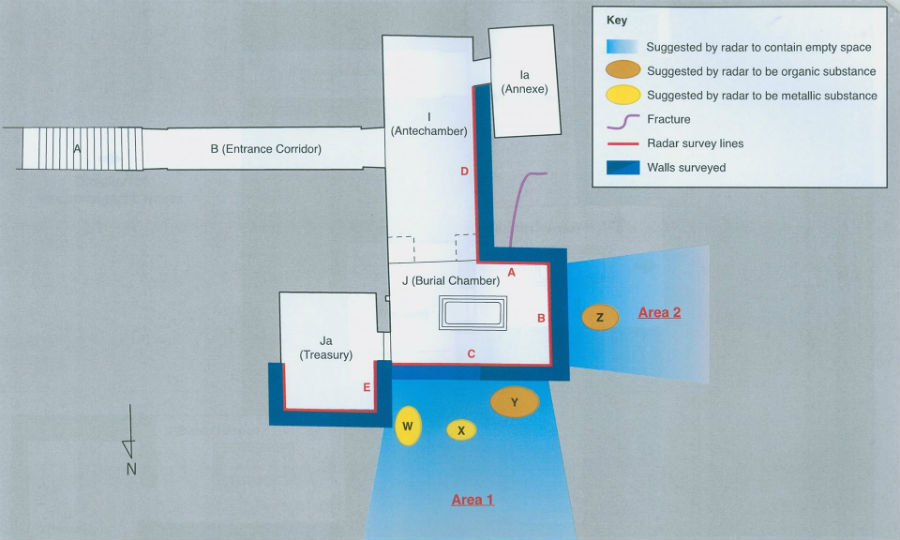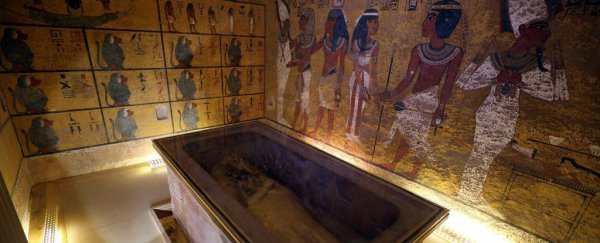It's been a long time coming and we're still not inside yet, but radar scans have revealed a 90 percent chance that there are two hidden chambers behind Tutankhamun's tomb in Luxor, Egypt.
Describing the new evidence as what could be "the discovery of the century", Egyptian antiquities minister Mamdouh Eldamaty said the scans also show signs of "metallic and organic substances" inside the chambers, hinting at the possibility that this could be the treasure-adorned tomb of Tutankhamun's long-lost stepmother, Queen Nefertiti.
"This would be like having the discovery of Tutankhamun again. It could be the discovery of the century. It is very important for Egyptian history and for all of the world," Eldamaty told the media today.
The new evidence comes six months after new high-resolution images taken of the northern and western internal walls of the 3,300-year-old tomb revealed never-before-seen markings in the plaster that were oddly similar to those found by Howard Carter on the entrance gate of the boy king's tomb in 1922.
At the time, what looked like the telltale markings of a tomb entrance had Eldamaty at 67 percent sure that they were on the verge of discovering a new tomb, but now that new evidence from radar scans taken of the space behind these walls in November has been analysed, he's bumped that estimate right up.
According to Ruth Michaelson and Peter Walker at The Guardian, the fuzzy, colour radar scans taken by Japanese radar specialist Hirokatsu Watanabe have revealed anomalies in the walls of the tomb that appear to make up a hidden door and two chambers behind the walls.
Of course, no one's going to be busting through those 3,000-year-old walls before it's absolutely certain that something is actually back there, so the team will be performing another round of radar scans to figure out the exact dimensions of the chambers, and the thickness of the hidden walls.
"We can say more than 90 percent that the chambers are there," said Eldamaty. "But I never start the next step until I'm 100 percent."
 Ministry of Antiquities
Ministry of Antiquities
So what do experts expect to find when/if they eventually get inside? Nicholas Reeves, a British Egyptologist from the University of Arizona who took the photographs that sparked the discovery, suspects the hidden chambers are the burial place of Tutankhamun's stepmother, Queen Nefertiti, whose existence was widely documented, but her body was never found.
Back in September, he said a popular hypothesis among historians is that when Tutankhamun died unexpectedly in 1323 BC at just 19 years old, his body was rushed into a new burial chamber that was essentially 'tacked onto' the side of Nefertiti's tomb.
Eldamaty, on the other hand, suspects they'll find a body, but not Nefertiti's. "Maybe it could be the lady of the family, as Reeves has said. But I think we could find Kiya, or Ankhesenamun," he said, referring to Tutankhamun's mother and half-sister.
"The results are fabulous. It would be nice, as Eldamaty said, to be 100 percent sure," Salima Ikram from the American University of Cairo told The Guardian. "All of the Egyptologists alive now have missed out on Tutankhamun, so we want our own Tutankhamun! We want to be there, to experience it. We're all terribly excited and rooting for it containing as much as possible."
The results of the next round of radar scans are expected to be announced on April 1, so we'll just have to hold our breath until then…
